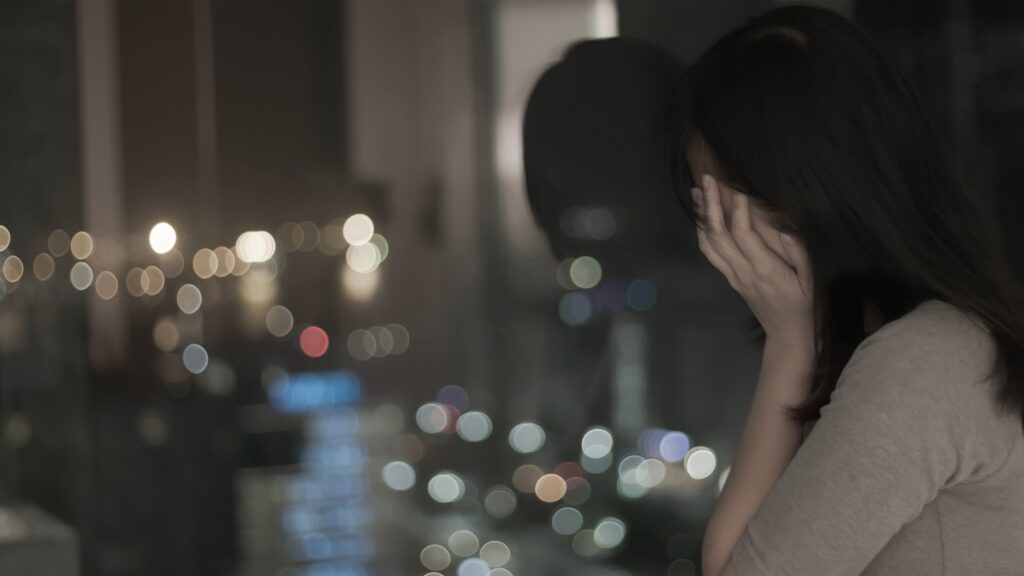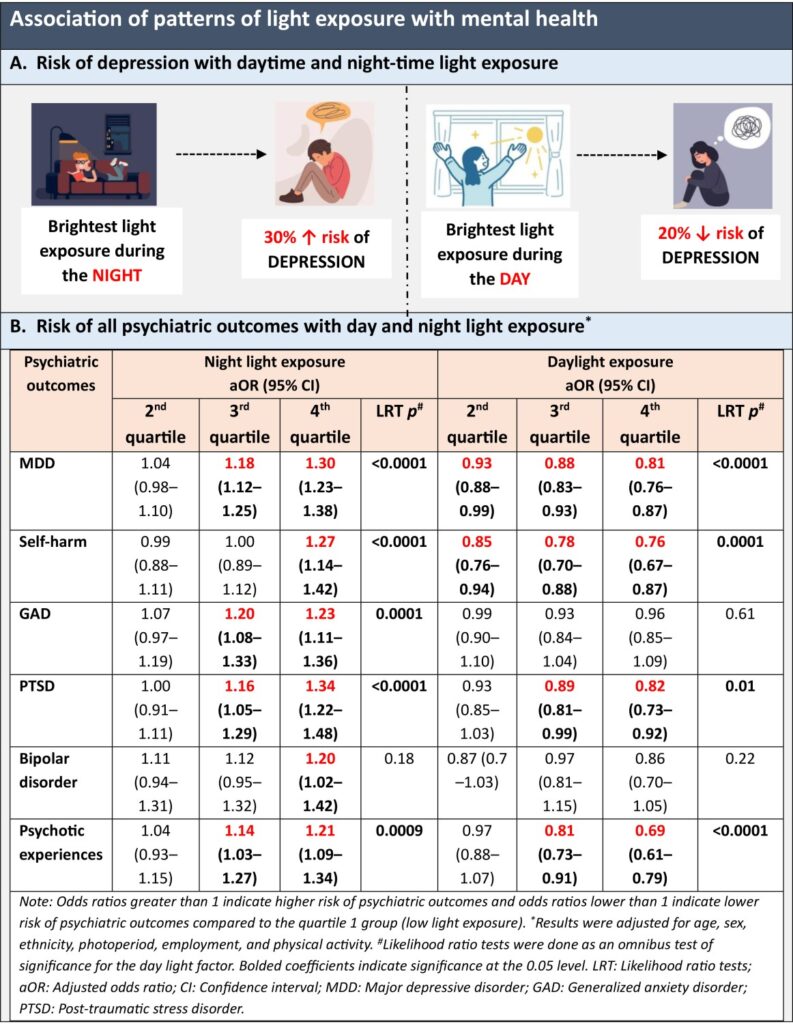
Circadian rhythm is a natural process in the body, primarily responding to light and dark stimuli, and involves physical, mental, and behavioral changes that follow a 24-hour cycle. Daytime light exposure strengthens the rhythm, while night-time light exposure weakens the rhythm. Disrupted or abnormal circadian rhythms and sleep disorders have been documented to be associated with many psychiatric disorders.
A recent study by Burns AC et al., published in the journal “Nature Mental Health”, reported that increased exposure to night-time light and reduced exposure to daytime light are associated with high risk of psychiatric disorders such as major depressive disorder (MDD), generalized anxiety disorder (GAD), bipolar disorder, post-traumatic stress disorder (PTSD), and self-harm behavior. The risk of depression increased by 30% in individuals exposed to brightest light during the night, while it decreased by 20% in those exposed to the brightest light during the day.
This largest to-date cross-sectional study analyzed data on daily light exposure from the United Kingdom Biobank. The participants (n = 86,772; 37–73 years; 43% male) had completed light monitoring and actimetry assessment for a week. Light exposure was measured using a triaxial accelerometer containing a silicon photodiode light sensor worn on the wrist. Information on mental health and psychiatric outcomes was obtained using an online mental health questionnaire. Multiple logistic regression was used to determine the association of light exposure patterns during the day and night with the case/control psychiatric outcomes. The analyses were also adjusted for covariates such as sex, age, ethnicity, photoperiod (day length), physical activity levels, and employment. The day and night light variables were divided into four equally sized quartiles (nQ1-Q4 = 21,693) in ascending brightness and were entered together as independent categorical predictors (reference = Quartile 1, lowest brightness).
The study results are summarized below:
- Association between light exposure and the risk of depression was remarkable, showing higher risk with the brightest light exposure during night-time and lower risk with the brightest light exposure during daytime (Graphic A).
- A higher risk for GAD, MDD, PTSD, bipolar disorder, self-harm behavior, and psychosis was associated with an increased light exposure during the night (Graphic B).
- Conversely, a lower risk for MDD, PTSD, self-harm behavior, and psychosis was associated with an increased light exposure during the day (Graphic B).
- Greater night light exposure was associated with higher scores on the Patient Health Questionnaire-9 (PHQ-9), GAD-7, and PTSD Checklist (PCL-6), and lower wellbeing scores (all p <0.0001).
- Greater daylight exposure was associated with lower scores on the PHQ-9 (p <0.0001), GAD-7 (p <0.0001), and PCL-6 (p = 0.002), and higher wellbeing scores (p <0.0001).
- Furthermore, these associations were significant even on adjusting the analyses for covariates such as sociodemographic factors, physical activity levels, cardiometabolic health, and photoperiod.

Clinical implications
- This is the first and the largest study reporting the analysis of objective light exposure data and assessing its association with mental health. The study demonstrates a striking impact of healthy light exposure patterns on mental health.
- Avoiding light exposure at night and seeking brighter light during the day may be a simple, effective, non-pharmacological option for improving mental health outcomes.
- Promoting circadian health can be a potential means for supporting more robust mental health.
(Source: Burns AC, Windred DP, Rutter MK, et al. Day and night light exposure are associated with psychiatric disorders: An objective light study in >85,000 people. Nat. Mental Health. 2023. Doi: 10.1038/s44220-023-00135-8)
